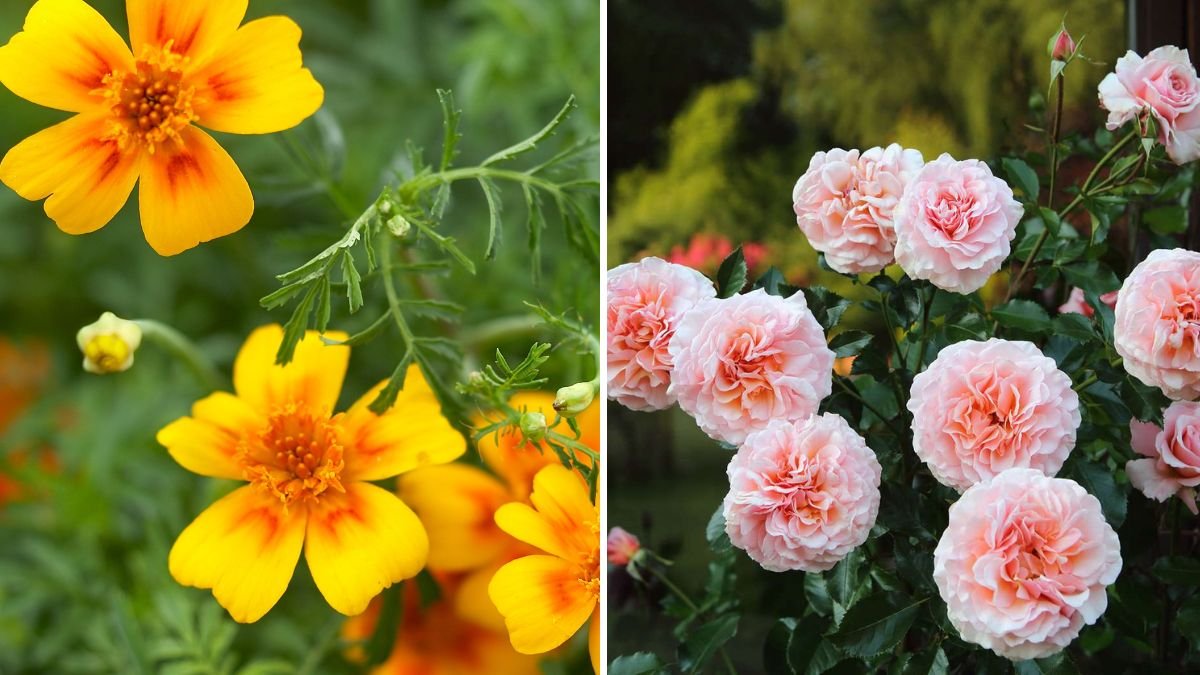Roses (Rosa spp.) are among the most cherished flowers in gardens worldwide, admired for their beauty, fragrance, and timeless elegance. However, these stunning plants are also susceptible to a variety of pests, including aphids, spider mites, Japanese beetles, and thrips. While chemical pesticides can be effective, they often harm beneficial insects, disrupt garden ecosystems, and leave residues on flowers.
An eco-friendly alternative is companion planting—growing specific plants near roses that naturally repel pests, attract beneficial insects, and enhance soil health. This method not only protects roses but also reduces maintenance, improves biodiversity, and creates a healthier, more sustainable garden.
In this article, we’ll explore seven plants that naturally protect roses from pests, along with expert tips on planting, care, and maximizing their pest-deterring benefits.
Why Companion Plants Protect Roses
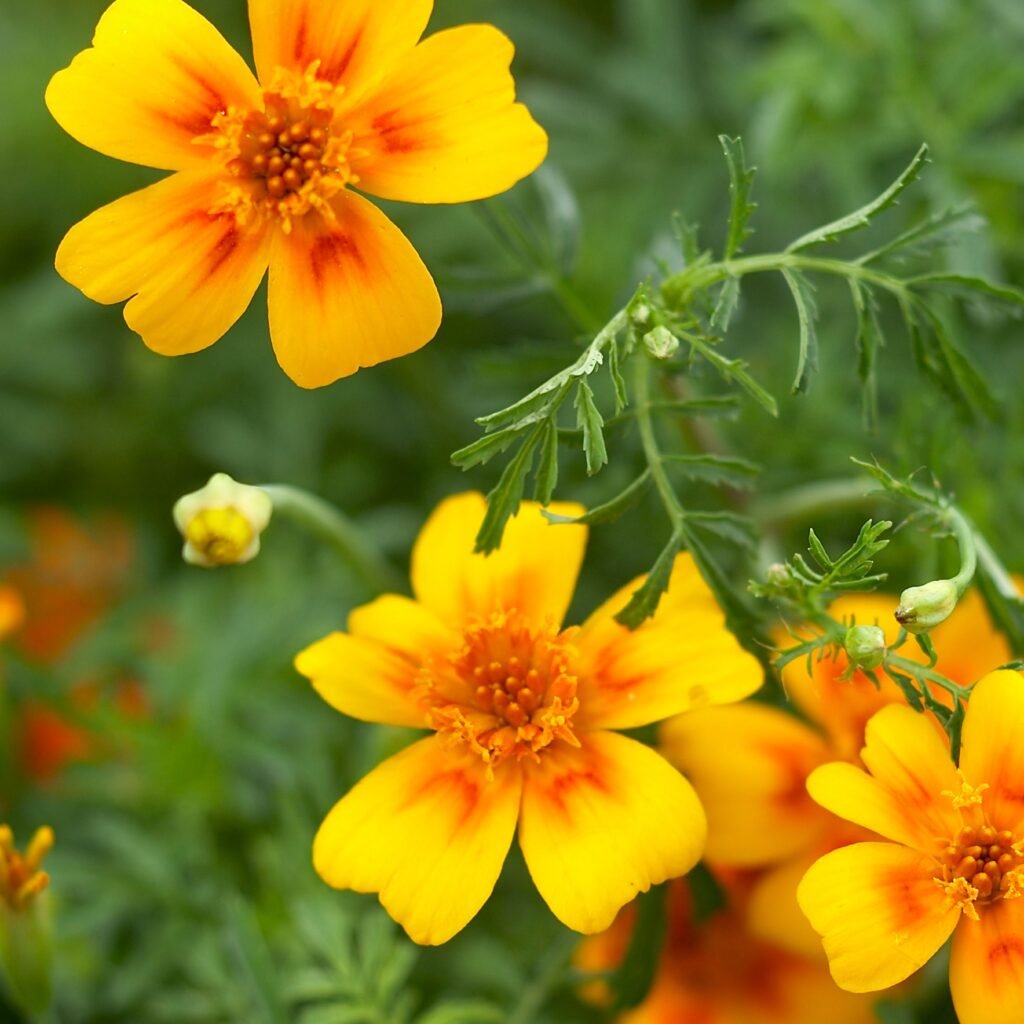
Companion planting works because certain plants:
- Produce aromatic compounds that repel harmful insects.
- Attract beneficial predators like ladybugs, lacewings, and parasitic wasps.
- Provide groundcover or physical barriers that reduce pest access.
- Enhance overall plant health, making roses more resilient to attacks.
By integrating the right companions, gardeners can reduce the need for chemical sprays and enjoy healthier roses throughout the growing season.
1. Lavender (Lavandula spp.)
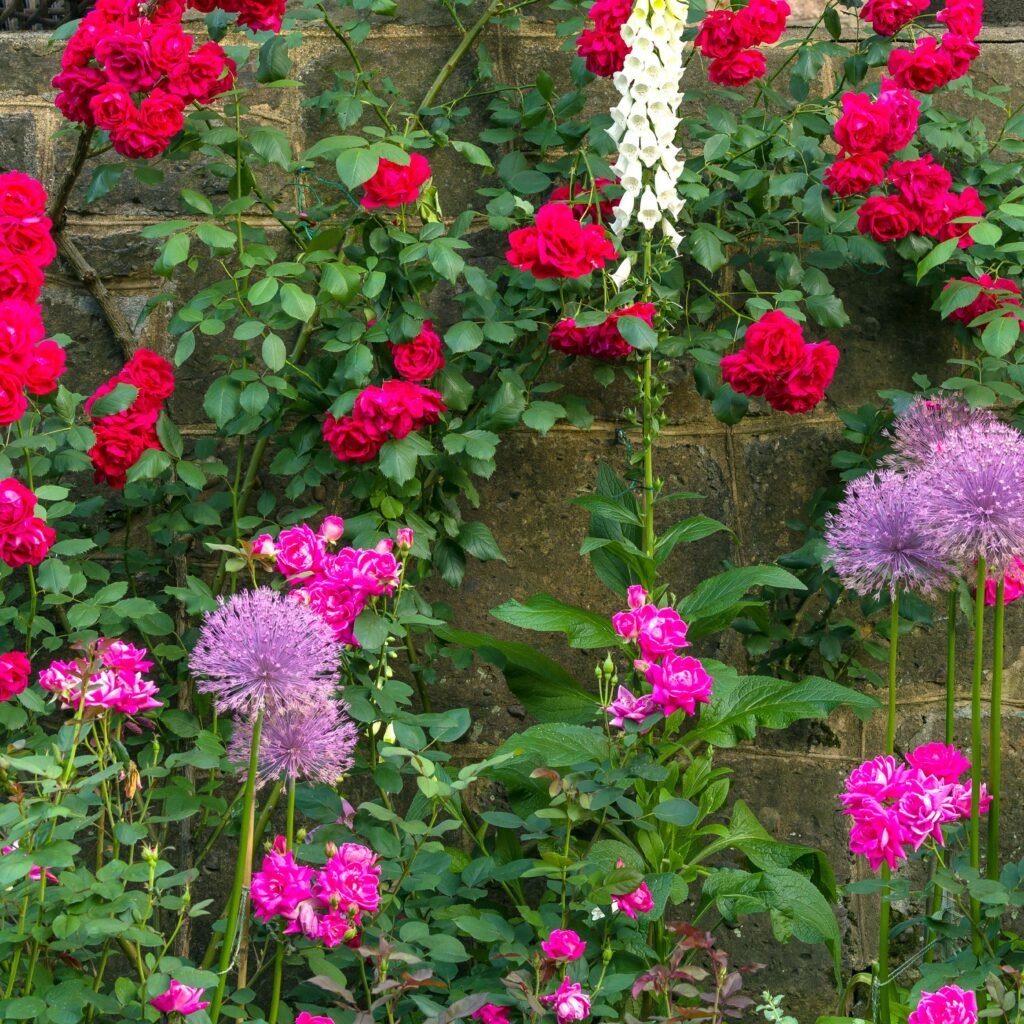
Lavender is one of the most popular companions for roses, known for its fragrant spikes of purple flowers.
Why It Protects Roses:
- Lavender’s strong scent repels aphids, whiteflies, and flea beetles, common rose pests.
- Attracts pollinators and beneficial insects, which can help control pest populations.
- Requires similar conditions as roses: full sun and well-drained soil.
Planting Tips:
- Plant lavender 12–18 inches from rose bushes to allow airflow.
- Use dwarf varieties for smaller garden beds.
- Deadhead flowers to encourage continuous bloom and fragrance.
Expert Insight: Lavender not only protects roses but also enhances the garden’s visual and aromatic appeal.
2. Marigolds (Tagetes spp.)
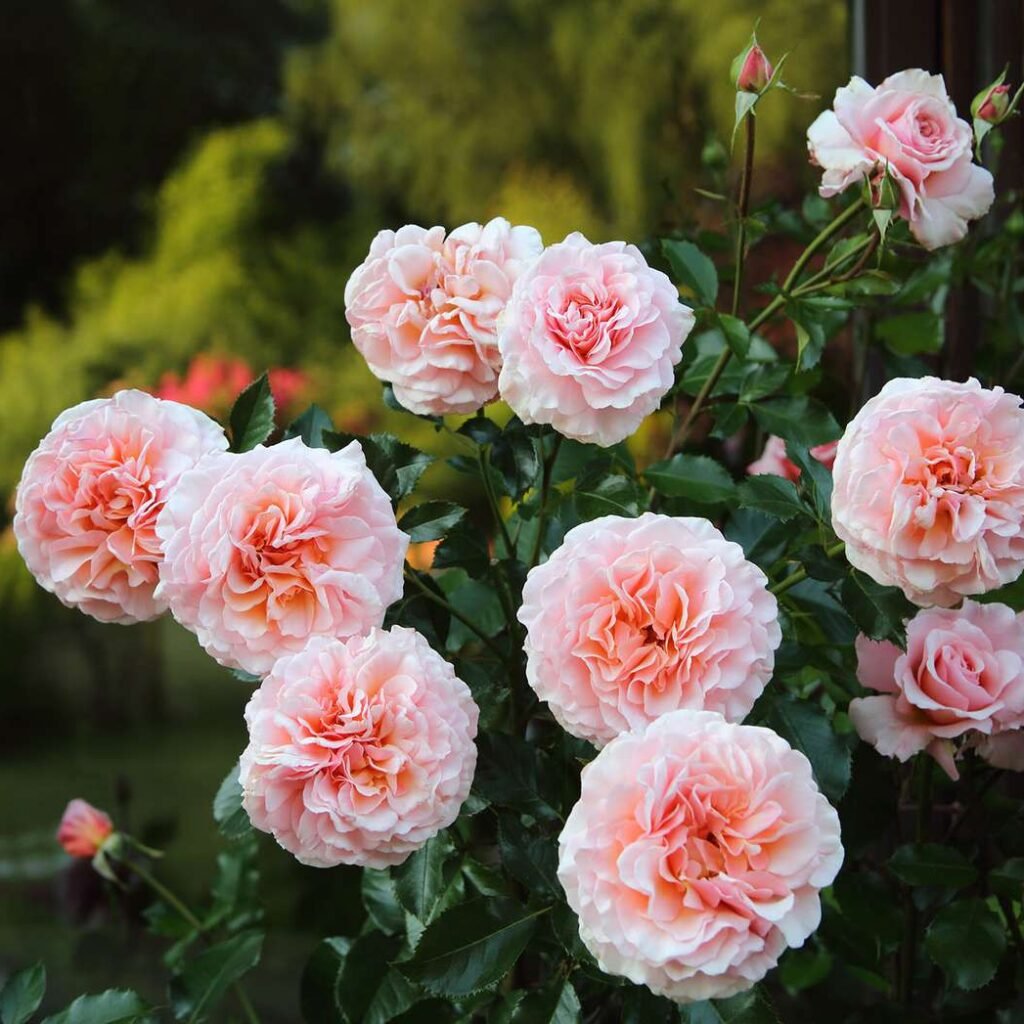
Marigolds are bright, cheerful flowers with a strong scent that deters many insects.
Why They Protect Roses:
- Release natural compounds that repel aphids, nematodes, and whiteflies.
- Attract ladybugs and hoverflies, which prey on rose pests.
- Easy to grow and maintain, thriving in sunny spots alongside roses.
Planting Tips:
- Plant marigolds around the base of rose bushes or along garden edges.
- Choose dwarf or medium-sized varieties to prevent overshadowing roses.
- Deadhead spent flowers to prolong bloom and maintain pest-repelling properties.
Expert Insight: Marigolds are a versatile companion, adding color while naturally protecting roses from multiple pests.
3. Garlic (Allium sativum)
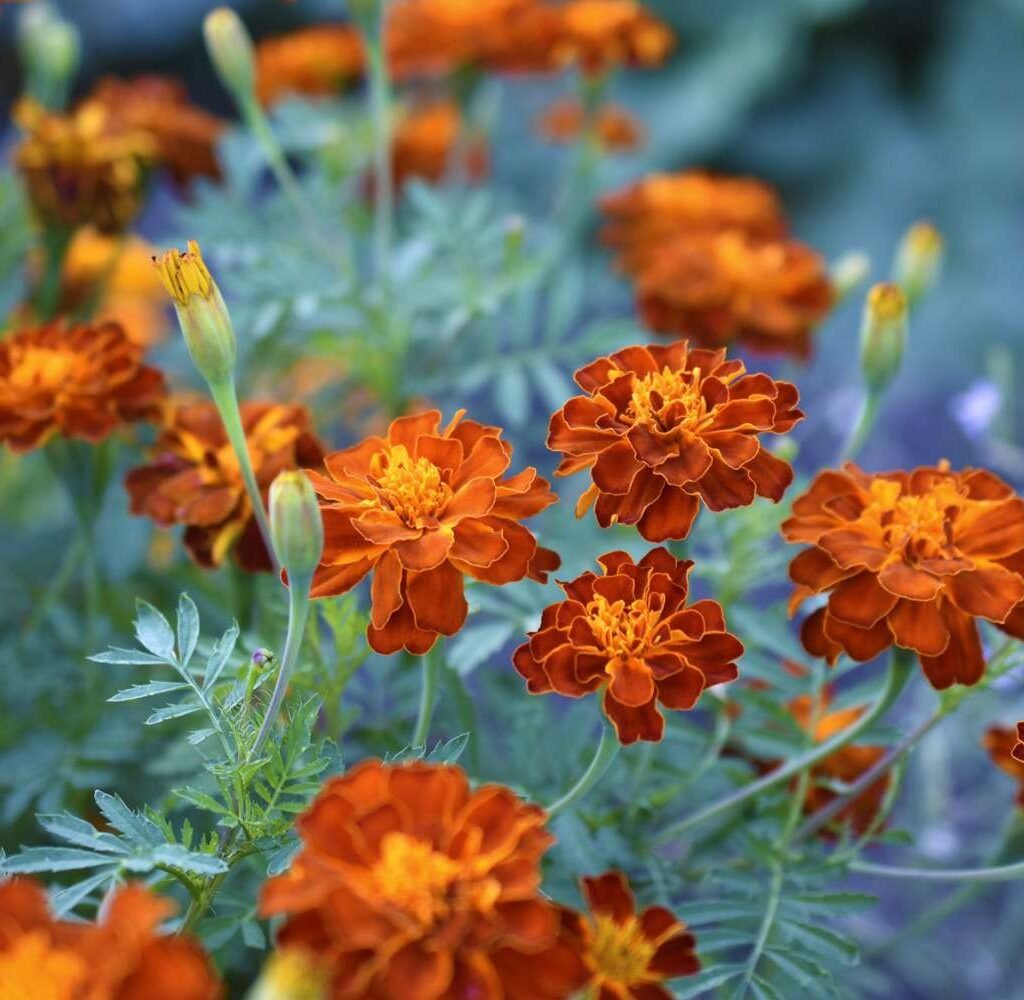
Garlic is not just a kitchen staple—it’s a potent pest-repelling plant for roses.
Why It Protects Roses:
- The strong smell of garlic deters aphids, Japanese beetles, and spider mites.
- Contains sulfur compounds that improve soil health and disease resistance.
- Low-maintenance and suitable for planting near rose roots.
Planting Tips:
- Plant garlic cloves 6 inches apart at the base of rose bushes.
- Mulch lightly to retain moisture and prevent bulbs from drying out.
- Harvest garlic in mid-summer, leaving rose companions undisturbed.
Expert Insight: Garlic is an effective, edible, and multifunctional companion that enhances both pest resistance and soil vitality.
4. Chives (Allium schoenoprasum)
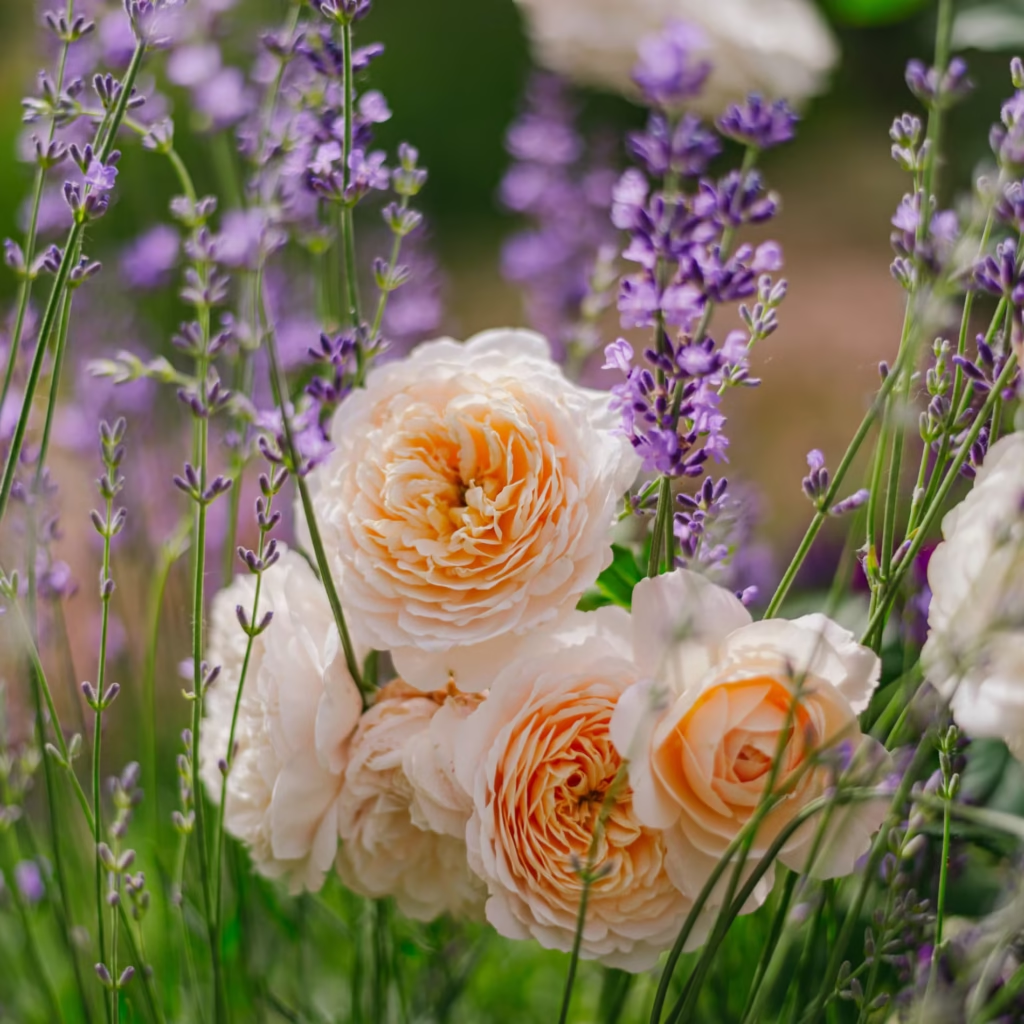
Chives are a compact, herbaceous companion that protects roses while adding ornamental appeal.
Why They Protect Roses:
- Emit a mild onion-like scent that repels aphids, Japanese beetles, and carrot flies.
- Attract beneficial insects such as hoverflies, which feed on rose pests.
- Easy to grow in both garden beds and containers near roses.
Planting Tips:
- Space chives 6–8 inches apart around rose bushes.
- Trim regularly to encourage fresh growth and maintain compact form.
- Use chive flowers to attract pollinators, further benefiting roses.
Expert Insight: Chives offer a dual-purpose advantage: pest control and edible harvest for the kitchen.
5. Catmint (Nepeta spp.)
Catmint is a hardy, perennial plant with aromatic foliage and long-lasting blooms.
Why It Protects Roses:
- Its fragrance repels aphids, Japanese beetles, and other soft-bodied pests.
- Attracts bees and predatory insects, which support natural pest control.
- Tolerates drought and full sun, thriving in the same conditions as roses.
Planting Tips:
- Plant catmint in clusters around roses for maximum protective effect.
- Prune after flowering to maintain shape and encourage rebloom.
- Use shorter varieties to prevent overshadowing rose blooms.
Expert Insight: Catmint provides long-lasting foliage, vibrant blooms, and pest protection, making it a reliable companion plant.
6. Nasturtiums (Tropaeolum majus)
Nasturtiums are low-growing, trailing plants with bright, edible flowers.
Why They Protect Roses:
- Act as a trap crop, attracting aphids and other pests away from roses.
- Repel whiteflies and cucumber beetles, reducing pest pressure on nearby plants.
- Easy to grow and maintain in sunny conditions with well-drained soil.
Planting Tips:
- Plant nasturtiums around the edges of rose beds.
- Allow trailing varieties to cascade along pathways for a natural look.
- Remove heavily infested leaves to maintain plant health.
Expert Insight: Nasturtiums serve as a natural pest decoy, keeping harmful insects occupied while roses remain protected.
7. Fennel (Foeniculum vulgare)
Fennel is a tall, aromatic herb that supports natural pest control around roses.
Why It Protects Roses:
- Attracts beneficial insects, such as ladybugs and parasitic wasps, which prey on aphids and other rose pests.
- The feathery foliage provides shelter for pollinators, enhancing overall garden biodiversity.
- Deters certain pests through its aromatic compounds.
Planting Tips:
- Plant fennel at the edge of rose beds to prevent it from competing for nutrients.
- Avoid overcrowding; fennel can grow quite tall and spread rapidly.
- Harvest fronds or seeds for culinary use without disturbing rose roots.
Expert Insight: Fennel boosts the ecosystem around roses, offering both pest protection and culinary benefits.
Tips for Maximizing Companion Plant Benefits
- Plant Diversity: Mix multiple companion plants to maximize pest control and attract a variety of beneficial insects.
- Sunlight & Soil: Ensure companions share roses’ requirements: full sun, well-draining soil, and moderate watering.
- Spacing: Maintain sufficient distance between plants for airflow, reducing fungal disease risk.
- Rotation: Rotate annual companions like marigolds to prevent soil depletion and pest adaptation.
- Regular Maintenance: Deadhead, prune, and trim companion plants to maintain health and maximize protective effects.
Benefits of Companion Planting With Roses
- Natural Pest Control: Reduces or eliminates the need for chemical pesticides.
- Pollinator Support: Encourages bees, butterflies, and beneficial insects.
- Soil Health: Certain companions, like garlic and chives, improve nutrient availability.
- Visual Harmony: Adds color, texture, and fragrance to rose gardens.
- Sustainable Gardening: Creates low-maintenance, eco-friendly landscapes.
Conclusion
Roses are stunning, but they require protection from common pests to thrive. Companion planting is a natural, effective, and visually pleasing solution. By planting lavender, marigolds, garlic, chives, catmint, nasturtiums, and fennel alongside roses, gardeners can enjoy:
- Reduced pest infestations
- Attracted pollinators and beneficial insects
- Healthier, more resilient plants
- A beautiful, aromatic, and sustainable garden
Integrating these companion plants creates a balanced ecosystem, enhances garden aesthetics, and ensures that roses remain the centerpiece of a healthy and vibrant garden year after year.
